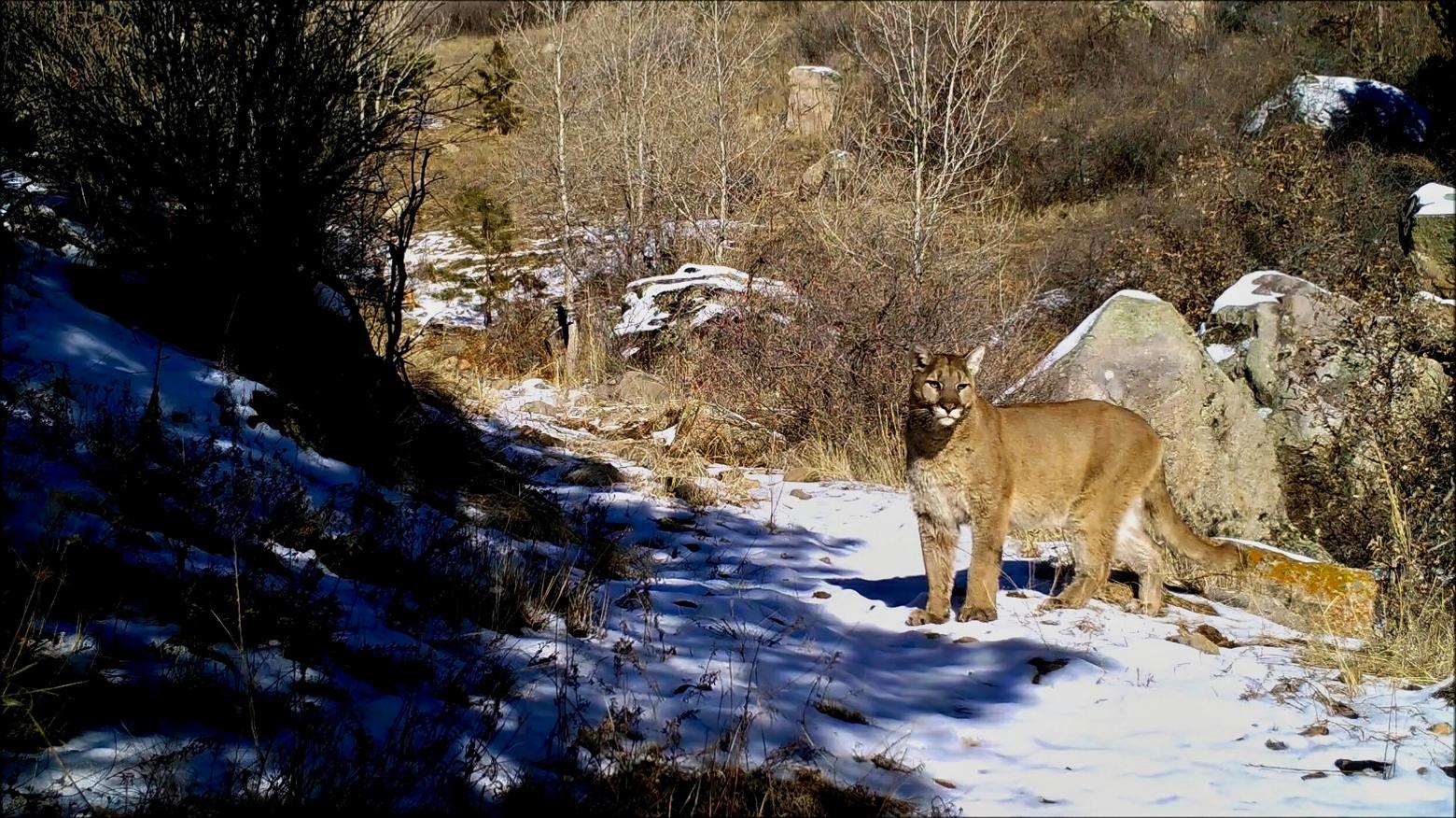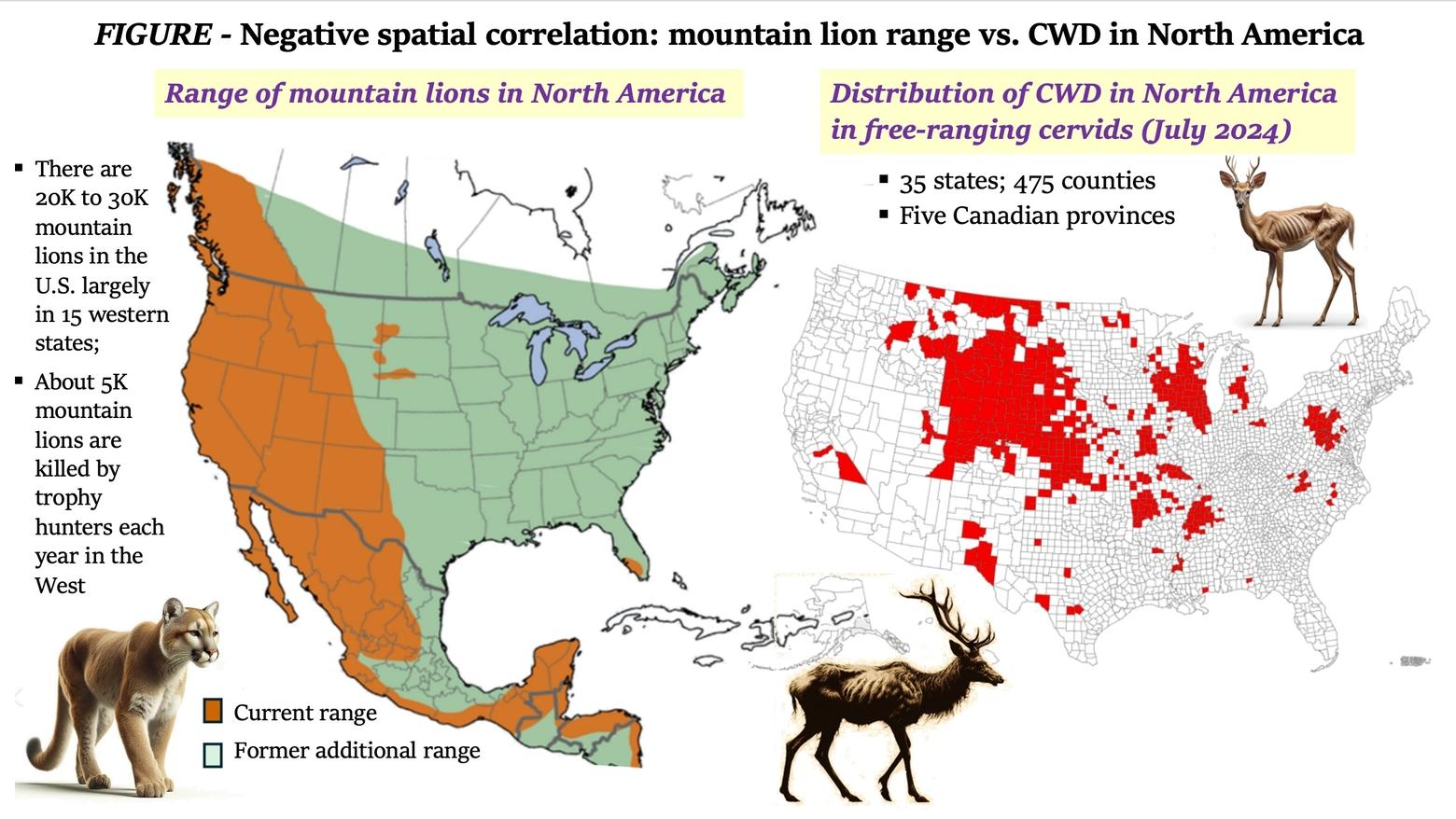Back to StoriesHunters Should Recognize Predators as Allies, not Competitors
October 18, 2024
Hunters Should Recognize Predators as Allies, not CompetitorsIf the whole of nature is good, writes Ted Williams in this op-ed, then no part can be bad
by Ted Williams
“Predator cleansing,” a term hatched not long ago by independent
wildlife researchers, doesn’t mean what it sounds like, that is, the ancient
tradition of killing predators in a vain attempt to create more and better
game.
Traditional predator cleansing is a fool’s errand still widely
practiced by people who call themselves “hunters” and compete in
predator-killing contests legal and popular in 41 states. Traditional predator
cleansing is even practiced by some game and fish agencies.
I asked Dr. Rick Hopkins, who has researched cougars for 45
years, what science supports Colorado Parks and Wildlife’s claim that cougar
hunting is necessary to create more mule deer. “None,” he replied. “For years game
and fish agencies have made such claims, but when pushed to provide evidence,
they can’t.”
My son, Dr. Scott Williams, is a deer biologist in
Connecticut where wolves and cougars, the main predators of deer, have been
eliminated. If traditional predator cleansing worked, his research areas would
be rife with large, robust animals. Instead, they’re overrun with stunted deer
that nuke wildlife habitat—including their own—and are infested with ticks that
spread dangerous diseases to humans, wildlife and pets.
What independent wildlife researchers have recently discovered
is that the “cleansing” is done by, not to, predators. Cougars, wolves,
coyotes, bobcats and lynx save far more cervids (deer, elk, moose and caribou)
than they kill. They save them by cleansing the environment of a 100-percent fatal
malady called chronic wasting disease, or CWD. Symptoms include stumbling, drastic
weight loss, drooling, excessive thirst and urination, drooping ears, and
fearlessness of humans and predators. Because CWD-stricken animals stumble and
don’t flee, predators select them. Predators are immune to CWD.
By limiting deer populations, predators also limit deer-tick-borne
maladies such as Lyme Disease, which annually debilitates nearly a half-million
Americans. If predators weren’t persecuted, they would be able to limit tick-borne diseases to a greater extent.
And deer deprived of healthy predator populations serve as Covid reservoirs in
which the virus mutates faster than in humans.
All threats to cervids pale in comparison with CWD. The Theodore
Roosevelt Conservation Partnership, a hunter-support group, calls the disease
“the biggest threat to the future of deer hunting.”
CWD was first reported in 1967 among captive mule deer in
Colorado. In 1981, it spilled over to wild Colorado elk. Since then, it has
spread to 35 U.S. states and five Canadian provinces along with Norway and
Sweden.
“A CWD outbreak among the 60,000 to 100,000 elk in the Greater
Yellowstone Basin, the largest concentration of free-ranging elk in North
America, is an impending eco-disaster,” warned Dr. James Keen, wildlife
veterinarian for the nonprofit Animal Wellness Action. A mule deer found dead
in Yellowstone National Park in October 2023 tested positive for CWD.
The pathogen is not a virus or bacterium, but a malformed, self-replicating
protein called a “prion.” It’s not alive, so humans can’t kill it by injecting
animals with drugs or even by cooking infected flesh. But predators deactivate
it through digestion. Deactivation is 96 to 100 percent effective, according to
four peer-reviewed studies.
CWD could jump to humans. That’s why the Centers for Disease
Control and Prevention warns hunters not to handle or eat infected game—in the
unlikely event that they can even identify it. In 2022, two hunters who ate
venison from the same CWD-ravaged deer herd died of prion disease. Given the
extreme rarity of human prion infections, this seems an unlikely coincidence.
“We are quite unprepared,” said Dr. Michael Osterholm, director
of the Center for Infectious Disease at the University of Minnesota. “If we saw
a spillover right now, we would be in free fall. There are no contingency plans
for what to do or how to follow up.”
For at least a century, cougars have been essentially extirpated from the East, Southeast, Great Plains and Midwest. This may explain why CWD is now epidemic in these regions.
Princeton
University biologist Dr. Andrew Dobson and the late University of Calgary
biologist Dr. Valerius Geist told the Denver Post in 2003 that they
believe “killing
off the wolf allowed CWD to take hold in the first place.”
Keen with Animal Wellness Action notes that CWD is “killing
hundreds of thousands, perhaps eventually even millions, of free-ranging deer
and elk in the United States and Canada. Predator cleansing is proposed as a
possible natural solution for the biological control of CWD.”
For at least a century, cougars have been essentially
extirpated from the East, Southeast, Great Plains and Midwest. This may explain
why CWD is now epidemic in these regions. But CWD is also epidemic where
cougars persist. In some of the West, however, the disease is less prevalent
where cougars are most abundant.
American-Canadian
mammal biologist Dr. Paul Paquet, who has monitored CWD in wolf habitat for
decades, told Mountain
Journal this in 2017: “To date, and in general, CWD has not
thrived where wolf populations are active.”
In Colorado, where trophy hunters annually kill about 500
cougars, CWD is epidemic and increasing. Currently, 42 of 51 deer herds and 17
of 42 elk herds are infected, according to Colorado Parks and Wildlife.
CWD is also epidemic and increasing in Wyoming, where trophy
hunters annually kill about 350 cougars. In one deer herd in west-central
Wyoming, 74 percent of hunter-killed male mule deer were infected with CWD,
reports Daryl Lutz, a biologist with the Wyoming Game and Fish Department. “It’s
the highest that’s been recorded, maybe anywhere in the world,” he said. Game
and Fish reports that, statewide, 18.9 percent of all hunter-killed male mule
deer in 2023 were infected with CWD, up from 17.6 percent in 2022. CWD was
discovered in 30.3 percent of hunter-killed male white-tailed deer in 2023, up
from 25.9 percent in 2022.
CWD was first detected in Montana in 2017. By 2024, it had
spread to 17 percent of all state hunting units. “There are parts of the
state where enough animals—namely white-tailed deer—have tested positive for
CWD that wildlife managers are concerned about population
declines like those seen in southeast Wyoming,” Montana
Free Press reported
in a 2021 article.
Idaho
Fish and Game reports that of 442 deer it tested last year, 6.4 percent were
positive for CWD.
These and similar results in other states call into question
the wisdom of permissive—in some cases unrestricted—hunting and trapping of
cougars, wolves, coyotes and bobcats.
At least in Colorado, hunters and other wildlife advocates can
vote to help deer, elk and moose by checking “yes” on Proposition 127, a
November ballot measure to protect cougars, bobcats and lynx.
Ted Williams, a lifelong hunter and former game and fish agency
information officer, writes exclusively about fish and wildlife.
Related Stories
March 7, 2021
Backward Thinking Targets Bears and Wolves
Op-ed: Chris Servheen, longtime national head of grizzly recovery in Lower 48, says Montana, Idaho are degenerating into anti-predator hysteria.
October 2, 2024
Are Bison Numbers in Yellowstone Sustainable?
About 4,500 bison live in
Yellowstone National Park. The National Park Service says it plans to manage
for up 1,500 more but a...
April 25, 2024
Wilderness: An Update on the Custer Gallatin
Considering
the changing climate and recent proposals, four heavy hitters weigh in on the future
of Wilderness, wildlife and the Custer Gallatin National...



